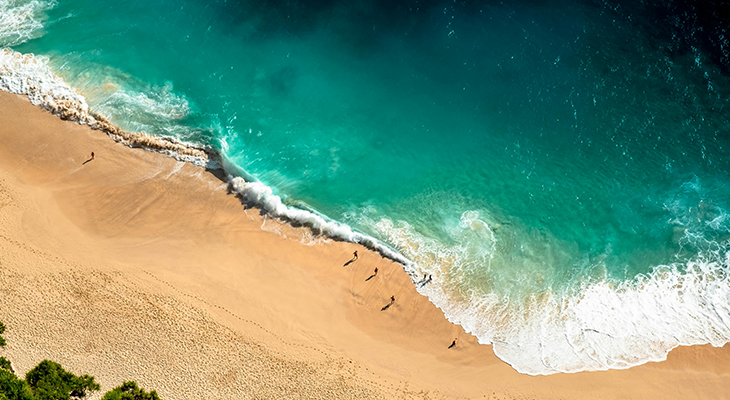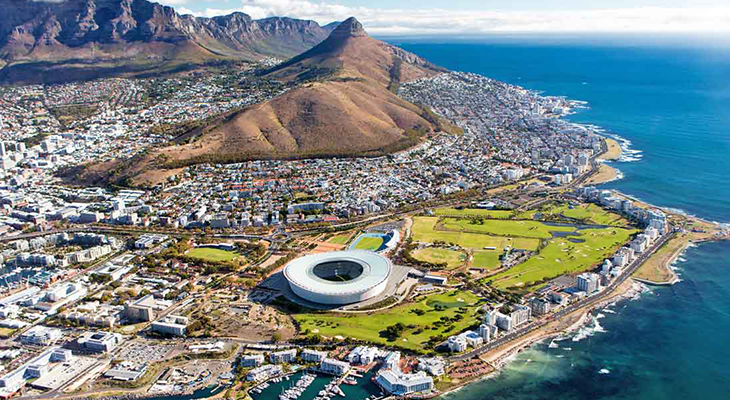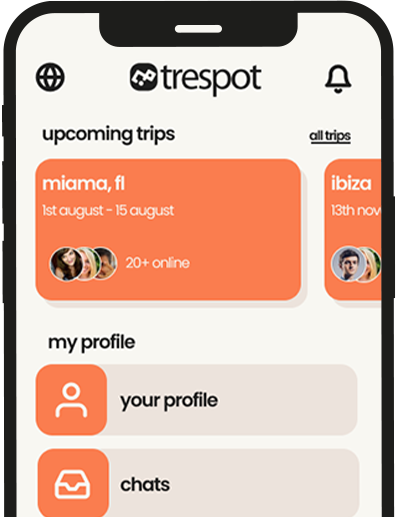Cheap Safe Countries to Visit: A Data‑Led Guide for Budget‑Smart, Safety‑First Travelers

TL;DR — Quick Answer
If you’re hunting for cheap safe countries to visit, the strongest all‑rounders (balancing low daily costs and trusted safety signals) include Thailand, Vietnam, Malaysia (Southeast Asia), Portugal, Albania, Georgia, Slovenia (Europe), Mexico’s Yucatán & Pacific “Pueblos Mágicos” corridors, Cuba (Caribbean), Jordan and Morocco (MENA), and South Africa’s Cape Town/Winelands (seasonal value). The picks lean on price benchmarks (Numbeo, BudgetYourTrip) and safety frameworks (Global Peace Index, International SOS, Berkshire Hathaway Travel Protection). Always check live advisories; for example, current guidance warns travelers to avoid the Thailand–Cambodia border zone amid clashes, while the rest of both countries remains open.
Table of Contents
- How we defined “cheap” and “safe” (our method)
- What the top‑ranking pages cover (and what they miss)
- Asia picks: cheap, safe, and social‑friendly
- Europe picks: wallet‑kind alternatives to the euro‑zone hotspots
- Americas & Caribbean picks: value with sensible boundaries
- Africa & Middle East picks: culture, desert, and wildlife—on a budget
- When to go: seasonal sweet spots that amplify value
- Safety × Budget playbook: practical moves that matter
- For solo travelers & meetups: connect, share costs, stay safe
- Quick Takeaways
- Conclusion
- FAQs
- References
1) How we defined “cheap” and “safe” (our method)
To build a trustworthy list of cheap safe countries to visit, we triangulated cost and safety from primary, regularly‑updated sources:
- Cost signals: Numbeo Cost‑of‑Living Index (to compare local prices across food, transport, rent) and BudgetYourTrip country/city pages (for real‑traveler daily cost ranges). Supplemental media roundups summarize exchange‑rate strength and value trends.
- Safety signals: Global Peace Index (IEP) for national benchmarks; International SOS Risk Map for operational risk (medical & security); Berkshire Hathaway Travel Protection’s traveler‑centric safety ranking; and U.S. State Department advisories for live, date‑specific alerts.
Note on recency: If you plan Thailand or Cambodia right now, factor in guidance to avoid the Thailand–Cambodia border zone amid clashes; airports and major tourist corridors in both countries continue to operate normally.
2) What the top‑ranking pages cover (and what they miss)
We reviewed top search results around “cheap safe countries to visit” and variants (“cheapest countries 2025,” “safest countries 2025,” “budget travel safe”). Core patterns:
- Cheap‑country lists highlight Southeast Asia (Thailand, Vietnam, Laos), Eastern Europe (Albania, Georgia), parts of Latin America (Mexico, Guatemala/Peru), and North Africa (Morocco, Egypt).
- Safest‑country lists lean on GPI or BHTP; classics like Iceland, Portugal, Denmark, New Zealand, and Japan rank high (safe, but not always the cheapest).
- Data explainers quantify daily budgets (e.g., HelloSafe/Visual Capitalist; Time Out’s “cheapest countries” 2025), often placing Laos, Kazakhstan, India, Nepal, and Georgia among value leaders.
What’s missing: Most listicles don’t align price and safety in one framework, or show how to plan with live advisories. Below, we do both—and add practical, on‑the‑ground tactics.

3) Asia picks: cheap, safe, and social‑friendly
Why Asia? Easy backpacker logistics, vast hostel ecosystems, affordable meals, and strong traveler communities. For the travel networking crowd, Asia is the world’s easiest place to assemble meetups.
Thailand
Why it fits: Cool/dry months (Nov–Feb) are peak‑pleasant; robust transport, a huge hostel scene, and excellent value for food/tours. BudgetYourTrip data helps price Bangkok, Chiang Mai, and island days.
Safety: Overall fine in major areas; current advisory caveat is to avoid the Thailand–Cambodia border conflict zone until conditions improve.
Vietnam
Why it fits: Low day‑to‑day costs, epic food, improving rail/long‑bus networks. It frequently ranks among the cheapest places to travel; daily budgets in Hanoi/Ho Chi Minh City/Hội An are modest.
Safety: Petty theft happens; violent crime against tourists is comparatively low. Cross‑check advisories before remote trips.
Malaysia
Why it fits: Affordable eats/accommodation, great infrastructure (KL & Penang), and wide English usage. Frequently praised for value plus a steady safety baseline.
Safety: Generally strong; use ride‑hail at night and official taxis at hubs.
Indonesia (Java/Bali/Nusa/Komodo)
Why it fits: Enormous range of low‑cost stays and eats; shoulder‑season swings enable standout deals. Bali and Java provide distinct culture at entry‑level budgets.
Safety: Tourism corridors are experienced with independent travelers; use standard precautions.
Sri Lanka
Why it fits: Compact island with rail journeys, beaches, and tea country; often cited as a budget gem with strong value per mile.
Safety: Check current advisory levels and local conditions before rural itineraries.
Networking hack: Base in Chiang Mai, Penang, or Da Nang—all have active co‑working scenes, cafes/hostels, and regular meetups. Use them as trip hubs to fan out on day trips. For budgeting, lean on BudgetYourTrip’s daily cost pages.
4) Europe picks: wallet‑kind alternatives to the euro‑zone hotspots
Why Europe at all? You won’t match Southeast Asia’s prices, but certain countries blend a strong safety baseline with lower daily costs—especially off‑season.
Portugal (Lisbon & beyond)
Why it fits: Safety + value overlap well; shoulder seasons make Lisbon/Porto affordable, with terrific trains to cheaper inland towns. Pair with Évora or Coimbra to stretch lodging budgets.
Plan: Track meal costs and neighborhoods with BudgetYourTrip; reserve popular restaurants at weekends.
Albania
Why it fits: Often called Europe’s cheapest (hostels/food/transport). Coast and Alps in one trip; accommodations improving rapidly.
Safety: Tourism corridors are calm; use standard urban precautions.
Georgia
Why it fits: Tbilisi + Kakheti deliver big value in food/wine/lodging. Datasets often place Georgia among budget leaders for 2025.
Safety: Tourist zones are welcoming; monitor regional advisories for border areas.
Slovenia
Why it fits: A safety powerhouse (top‑tier in many frameworks) with excellent hiking and rail links; costs are mid‑range for Europe, and gentler than Western capitals.
Tactic: Visit May–June or Sept–Oct for lower prices and ideal hiking weather.
Poland (Kraków, Gdańsk)
Why it fits: Reliable rail network, affordable eats, mid‑range hotels versus Western Europe; frequently recommended for budget‑minded city breaks.
Safety: Stable urban environment; mind standard big‑city precautions.
5) Americas & Caribbean picks: value with sensible boundaries
Mexico (Yucatán & curated Pacific routes)
Why it fits: Pick safer, well‑touristed corridors—Mérida, Valladolid, Bacalar—or curated Pacific towns with strong hospitality. Expect excellent cuisine, affordable buses, and competitive mid‑range stays.
Safety: Choose neighborhoods carefully, avoid late‑night driving, follow region‑level advisories.
Cuba
Why it fits: Low day‑to‑day costs, heritage cities, beaches, and a comparatively low violent‑crime profile for tourists.
Practical: Data access can be spotty—arrive with eSIM and offline maps pre‑downloaded.
Panama
Why it fits: Budget‑friendly gateway to rainforests and Caribbean islands; increasingly represented in cheap‑destination shortlists.
Safety: Stick to well‑trafficked districts/islands and current advisories.
Peru
Why it fits: Competitive guesthouse prices and affordable intercity buses keep costs reasonable (verify political/strike updates ahead of Andean travel).
Safety: Use standard big‑city caution; verify trail and region conditions in advance.
Budget move: In the Americas, your cost swings more with neighborhood choice than country averages. Cross‑reference BudgetYourTrip city pages and official advisories when selecting a base.
6) Africa & Middle East picks: culture, desert, and wildlife—on a budget
Morocco
Why it fits: Historic cities, Sahara gateways, and very competitive food/lodging prices; repeatedly listed among affordable destinations.
Safety: Tourist routes are well trodden; watch petty scams and confirm conditions before remote drives.
Jordan
Why it fits: Petra and Wadi Rum with shoulder‑season deals outside peak months; widely framed as a safer MENA entry point for first‑timers.
Tactic: Base in Amman (budget guesthouses) and day‑trip on shared tours to reduce cost.
South Africa (Cape Town & Winelands)
Why it fits: Tremendous value‑to‑experience ratio when timed for shoulder weeks (Nov, Mar). Nature, food, and wine experiences at friendly prices.
Safety: Favor well‑reviewed areas, use ride‑hail at night, and match neighborhood choices to advisory guidance.
United Arab Emirates (Dubai) — “safety‑first city break”
Why it fits: Not the absolute cheapest, but very safe and often affordable for short stops (budget airlines, transit passes, free beach promenades).
Data note: Several traveler‑centric safety reports consistently rate the UAE highly.
Risk‑aware planning: For African/Middle‑Eastern routes, layer traveler‑centric safety scores with International SOS medical/security maps to prioritize corridors with stronger infrastructure (e.g., coastal Morocco rail, Cape Town ride‑hail, Jordan’s Desert Highway).
7) When to go: seasonal sweet spots that amplify value
- Southeast Asia: Nov–Feb is cooler/drier in mainland hubs (Thailand, Vietnam) → best comfort but book early. Shoulder months (Mar, Oct) trade some heat/showers for lower prices.
- Southern Europe: Apr–May & Sept–Oct keep prices gentler in Portugal/Albania/Slovenia; winter city breaks can be very cheap (short daylight).
- Americas/Caribbean: Pre‑Christmas November balances weather and price in Mexico/Cuba/Panama before holiday surges.
- Southern Africa: Late spring (Nov) or late summer (Mar) around Cape Town give warmth without peak pricing.
Overlay plans with a current International SOS Risk Map to factor seasonal health/security shifts (storms, heat waves, unrest).
8) Safety × Budget playbook: practical moves that matter
- Pick with data: Start with GPI / BHTP / International SOS, then zoom into U.S. State Department advisories for city/region updates (e.g., avoid the Thailand–Cambodia border as currently advised).
- Price your days: Use BudgetYourTrip to map daily costs and where shared apartments/cars create disproportionate savings.
- Transit choices: Safer + cheaper often means day trains/buses; use ride‑hail at night in big cities. Check heat/altitude and medical access with International SOS ratings.
- Insurance & docs: Cross‑shop plans; BHTP’s methodology also indicates where medical systems are robust—useful for destination choice.
9) For solo travelers & meetups: connect, share costs, stay safe
- Base in hubs (Chiang Mai, Da Nang, Penang, Lisbon, Tbilisi) for daily community events, low lodging, and easy day‑trip options.
- Signal your plan in your Trespot community chat: dates, budget band, neighborhoods you consider safe (with advisory links).
- Venue choices: hostels with female‑only dorms/private rooms; guesthouses with on‑site owners; stays near transit or patrol routes.
- Micro‑rules: arrive by day, ride‑hail at night, use ATMs inside banks/malls, keep tech discreet, store ID copies, and download offline maps (crucial in Cuba).
12) Quick Takeaways
Southeast Asia (Thailand, Vietnam, Malaysia) + Portugal/Albania/Georgia/Slovenia = standout overlap of low costs and strong safety frameworks.
Mexico’s Yucatán and Cuba offer big value—research neighborhoods and check advisories.
Morocco/Jordan are budget‑friendly MENA entry points if you follow local norms and official guidance.
Cape Town/Winelands shine in shoulder months; plan neighborhoods and transit smartly.
Use GPI/BHTP/International SOS + State Dept. together; watch date‑stamped alerts (e.g., the Thailand–Cambodia border advisory).
13) Conclusion
The smartest way to pick cheap safe countries to visit is to layer data: combine objective cost tools (Numbeo, BudgetYourTrip) with safety frameworks (Global Peace Index, International SOS, BHTP) and live advisories (U.S. State Department). Do that, and a clear shortlist emerges: Thailand, Vietnam, Malaysia for Asia; Portugal, Albania, Georgia, Slovenia for Europe; Mexico’s Yucatán and Cuba for the Americas; Jordan and Morocco in MENA; and South Africa (Cape Town/Winelands) in southern Africa’s shoulder season.
From there, optimize timing (seasonality drives prices), choose neighborhoods with transit and walkability, and coordinate with your travel community to share apartments, transfers, or tours. With a data‑aware plan, you don’t have to choose between saving money and staying safe—you can confidently have both, and you’ll likely meet fellow travelers doing the same.
Your next step: Post your dates, budget band, and 2–3 candidate bases in your Trespot chat; we’ll help shape a 3–5 day micro‑itinerary that maximizes value while aligning with current safety guidance.
14) FAQs — Cheap Safe Countries to Visit
1) What’s the single best tool to compare safety across countries?
Use a bundle: Global Peace Index (macro), BHTP’s traveler‑centric safety ranking, and International SOS (medical/security). Then confirm with U.S. State Department advisories for date‑specific events.
2) Which cheap countries have the best safety reputation?
Portugal, Slovenia, Japan, New Zealand consistently score high on safety frameworks; for lower costs, lean toward Portugal and Southeast Asia picks (Thailand/Vietnam/Malaysia).
3) How do I estimate a realistic daily budget?
Check BudgetYourTrip for city/country daily averages (lodging, food, transit, attractions) and cross‑check with Numbeo for price context.
4) Is Thailand still a cheap safe country to visit right now?
Yes for major areas—but avoid the Thailand–Cambodia border zone per current guidance. Cities and islands remain open with normal flight operations.
5) Are Mexico and South Africa “safe enough” for budget travel?
They can be—with area selection, local transport habits, and current advisories. Many travelers report excellent value in Yucatán/Pacific towns and Cape Town/Winelands during shoulder months.
Was this guide helpful?
Tell us your top 2 candidate bases (e.g., Chiang Mai vs. Da Nang, Lisbon vs. Tbilisi) and your dates. We’ll reply with a custom 5‑day micro‑itinerary that maximizes value and safety—and help you find travel buddies in your Trespot community to split apartments, drivers, or tours.
Question: Which two destinations are you torn between—and what’s your #1 decision factor (sun, price, food, or safety)?


